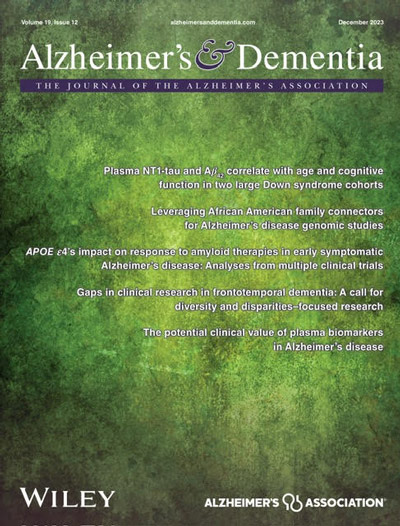Neurocognitive disorders, depression, and associated factors in younger and older adults from an urban-marginalized area of Peru
Abstract
INTRODUCTION
In urban-marginalized areas of low-to-middle-income countries (LMICs), neurocognitive disorders (NCDs) and depression present significant public health issues, exacerbated by socioeconomic disparities.
METHODS
This study explores the prevalence and risk factors of NCDs and depression among 1064 community-dwelling adults in an urban-marginalized district of Lima, Peru. Structured questionnaires collected demographic, health, and socioeconomic data; neurocognitive assessments and depression screening were conducted.
RESULTS
Mean age was 50.5 years, with 71% female, and a mean of 9.1 years of education. Among older adults, 32% had mild NCD and 4.2% had major NCD; 21.1% of younger adults had any NCD. Nearly 40% of the cohort was depressed. Risk factors for MCI and NCD included lower education, hypertension, and non-Spanish native language, while depression was associated with female sex, lower education, overcrowding, and chronic diseases.
DISCUSSION
The study emphasizes the need for targeted interventions to address NCDs and mental health in urban-marginalized areas of LMICs.
Highlights
- Among older adults, 32% had mild neurocognitive disorder (NCD) and 4.2% had major NCD; 21.1% of younger adults had any NCD.
- Nearly 40% of the cohort was depressed.
- Risk factors for mild cognitive impairment (MCI) and NCD included lower education, hypertension, and non-Spanish native language, while depression was associated with female sex, lower education, overcrowding, and chronic diseases.


 求助内容:
求助内容: 应助结果提醒方式:
应助结果提醒方式:


